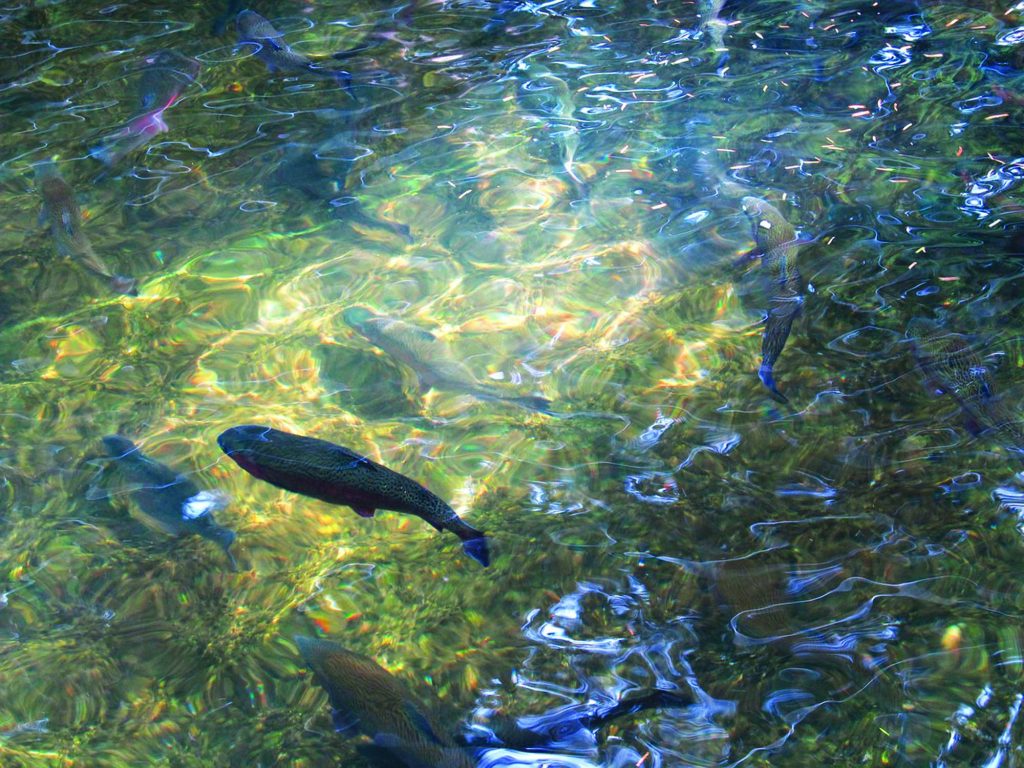WESTCLIFFE, Colo. – With his sidearm sticking out from under leather chaps, Justin Krall swung up into the saddle of his mule, Speedy, and gently nudged it up the Cottonwood Creek trail as he tugged the reins of his other mule, Jenny, following behind.
On Jenny’s back were two large saddle tanks packed with about 2,000 rare Hayden Creek cutthroat trout and pressurized steel canisters pumping oxygen into the water. Krall, a District Wildlife Manager for Colorado Parks and Wildlife (CPW), was helping the agency’s aquatic biologists move the fish about six miles up the steep trail to the upper reaches of the creek.
Two more mules shared the trail with Krall, Speedy and Jenny. They belonged to Jeff Outhier of the U.S. Forest Service (USFS) who also helped carry the load up Cottonwood Creek trail along with dozens of CPW, USFS and Trout Unlimited volunteers on July 1.
They all endured hot sun and drenching rains as they hauled bags of four-inch fish and deposited them at various points upstream.
CPW went to extremes to get these fish into the creek because they are very special fish. They contain genetic markers matching museum specimens collected by early explorers. In 1889, ichthyologist David Starr Jordan collected a pair of trout specimens from Twin Lakes, near Leadville. Today those specimens reside at the Smithsonian Institution’s National Museum of Natural History. The Hayden Creek cutthroat trout are the only known modern fish to share their genetics.
The fish stocked July 1 are descendants of 158 trout rescued by CPW from the Hayden Pass Fire in 2016, which threatened to wipe out the only known population still in existence.
As the 2016 fire raged southwest of Cañon City, aquatic biologists and staff from CPW and USFS crossed fire lines to rescue the trout before monsoon rains came, flushing the creek with choking sediment. The fish caught that day were taken to the Roaring Judy Hatchery isolation facility near Crested Butte and spawned the following springs. Meanwhile, CPW surveys of Hayden Creek after the fire and subsequent ash flows didn’t find a single survivor.
But it’s not enough to save them in a hatchery. CPW wants to restore them to several streams within the Arkansas Basin to ensure these unique cutthroat genes survive.
“We are looking at several streams in the Arkansas basin where these fish could be introduced,” said Josh Nehring, CPW senior aquatic biologist. “Spreading them across the region makes them less vulnerable to extinction due to an isolated catastrophic fire or flood event. Restoring these unique fish is a key first step to preserving these unique genes and ensuring we continue to have them on the landscape.”
SPREAD THE NEWS
COMMENT, Like, Follow & SHARE @I70Scout
CURRENT EDITION
WEATHER & TRAFFIC PUZZLES RECENT NEWS ADVERTISE WITH US

Leave a Reply